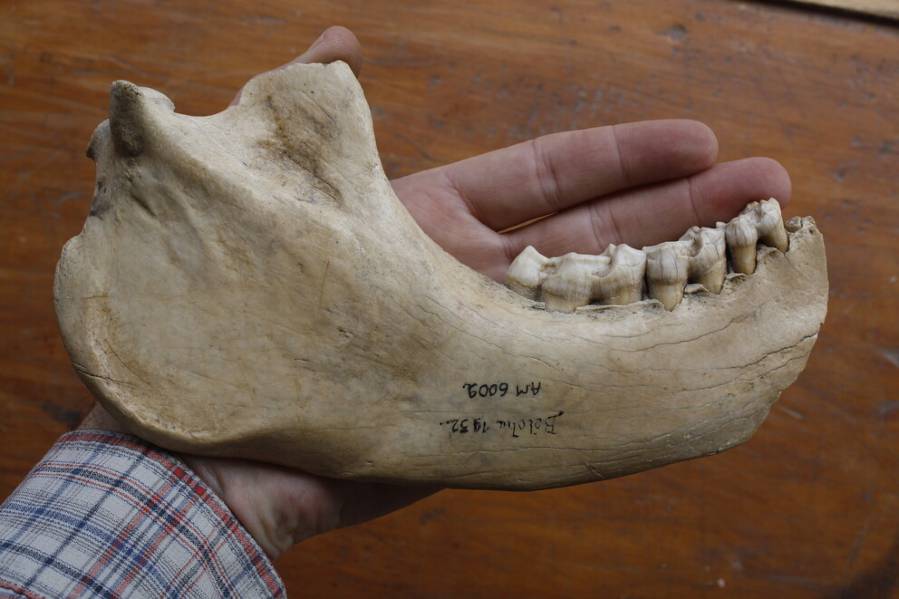Newly Sequenced Genome Of Extinct Giant Lemur Sheds Light On Animal's Biology
July 9, 2021 Penn State

Part of the collection of the Laboratory of Primatology and Paleontology at the University of Antananarivo, the jawbone that the team used in its study had originally been discovered at Beloha Anavoha in southern Madagascar. Carbon-14 dating, a commonly used method for determining the age of archeological artifacts of a biological origin, revealed that the M. edwardsi jawbone was about 1,475 years old. IMAGE: GEORGE PERRY, PENN STATE
Using an unusually well-preserved subfossil jawbone, a team of researchers — led by Penn State and with a multi-national team of collaborators including scientists from the Université d’Antananarivo in Madagascar — has sequenced for the first time the nuclear genome of the koala lemur (Megaladapis edwardsi), one of the largest of the 17 or so giant lemur species that went extinct on the island of Madagascar between about 500 and 2,000 years ago.
The findings reveal new information about this animal’s position on the primate family tree and how it interacted with its environment, which could help in understanding the impacts of past lemur extinctions on Madagascar’s ecosystems.

More than 100 species of lemurs live on Madagascar today, but in recent history, the diversity of these animals was even greater. This illustration shows a Madagascar forest scene with several extant, or living, lemurs along with subfossil skulls of extinct lemurs.
IMAGE: MARIJA STOJKOVIC
“More than 100 species of lemurs live on Madagascar today, but in recent history, the diversity of these animals was even greater,” said George Perry, associate professor of anthropology and biology, Penn State. “From skeletal remains and radiocarbon dating, we know that at least 17 species of lemurs have gone extinct, and that these extinctions happened relatively recently. What’s fascinating is that all the extinct lemurs were bigger than the ones that survived, and some substantially so; for example, the one we studied weighed about 180 pounds.”
More:
https://scienceblog.com/523951/newly-sequenced-genome-of-extinct-giant-lemur-sheds-light-on-animals-biology/

